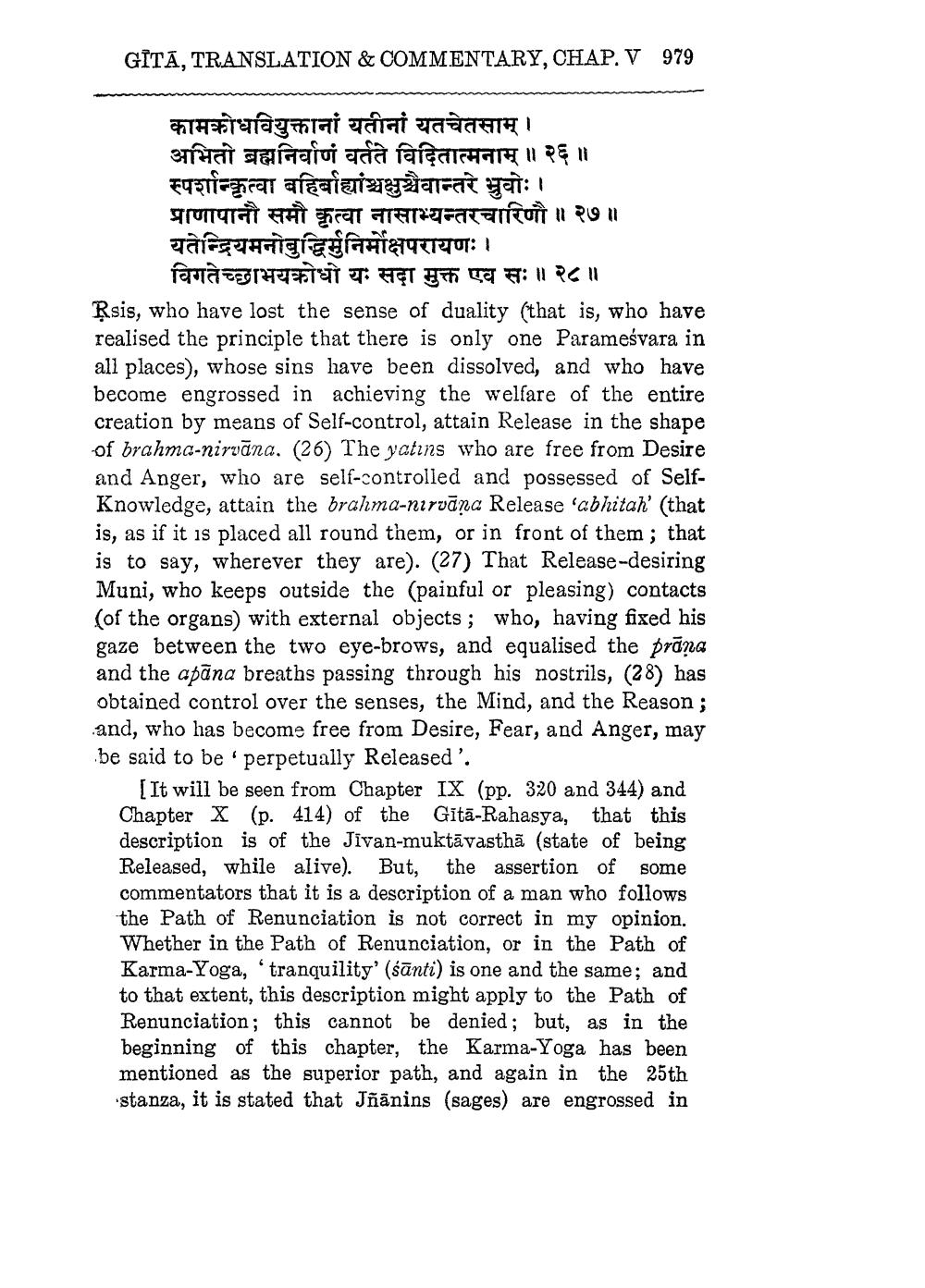________________
GĪTĀ, TRANSLATION & COMMENTARY, CHAP. V 979
कामकोधवियुक्तानां यतीनां यतचेतसाम् ।
अभितो ब्रह्मनिर्वाणं वर्तते विदितात्मनाम् ॥ २६ ॥ स्पर्शान्कृत्वा बहिर्बाह्यांश्चक्षुश्चैवान्तरे भ्रुवोः । प्राणापानौ समौ कृत्वा नासाभ्यन्तरचारिणौ ॥२७॥ यतेन्द्रियमनोबुद्धिर्मनिर्मोक्षपरायणः।
विगतेच्छाभयकोधो यः सदा मुक्त एव सः ॥ २८॥ Ķsis, who have lost the sense of duality (that is, who have realised the principle that there is only one Parameśvara in all places), whose sins have been dissolved, and who have become engrossed in achieving the welfare of the entire creation by means of Self-control, attain Release in the shape of brahma-nirvana. (26) The yatins who are free from Desire and Anger, who are self-controlled and possessed of SelfKnowledge, attain the brahma-nirvana Release 'abhitah' (that is, as if it is placed all round them, or in front of them; that is to say, wherever they are). (27) That Release-desiring Muni, who keeps outside the (painful or pleasing) contacts (of the organs) with external objects; who, having fixed his gaze between the two eye-brows, and equalised the prana and the apāna breaths passing through his nostrils, (28) has obtained control over the senses, the Mind, and the Reason; and, who has become free from Desire, Fear, and Anger, may be said to be perpetually Released'.
[ It will be seen from Chapter IX (pp. 320 and 344) and Chapter X (p. 414) of the Gītā-Rahasya, that this description is of the Jivan-muktāvasthā (state of being Released, while alive). But, the assertion of some commentators that it is a description of a man who follows the Path of Renunciation is not correct in my opinion. Whether in the Path of Renunciation, or in the Path of Karma-Yoga, 'tranquility' (śānti) is one and the same; and to that extent, this description might apply to the Path of Renunciation; this cannot be denied; but, as in the beginning of this chapter, the Karma-Yoga has been mentioned as the superior path, and again in the 25th stanza, it is stated that Jñanins (sages) are engrossed in




